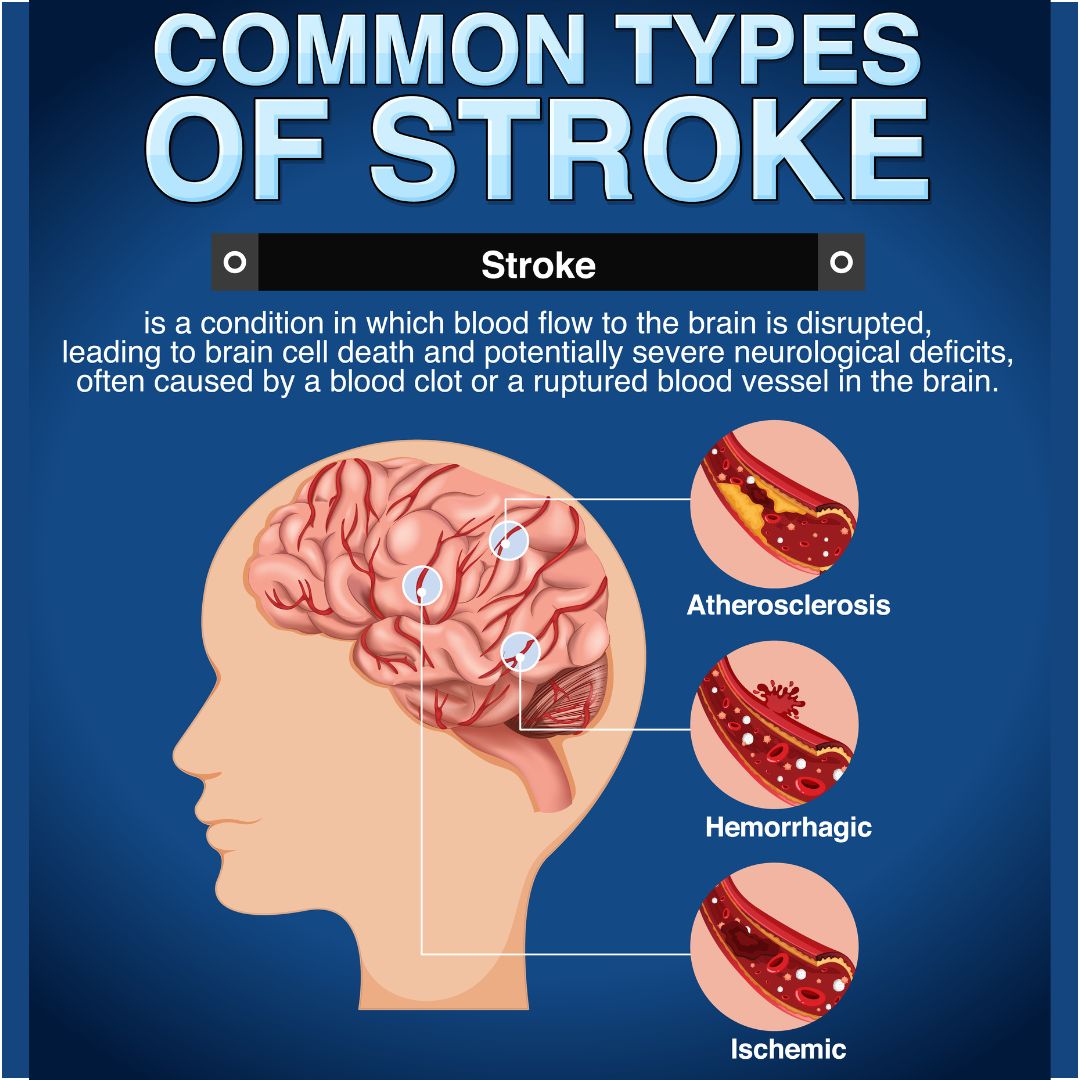Strokes are a serious medical condition that can have life-altering consequences. They occur when the blood supply to the brain is disrupted, leading to damage or death of brain cells. Strokes can result in a range of physical and cognitive impairments, making prevention a critical aspect of healthcare. Fortunately, many strokes are preventable through lifestyle changes and risk-reduction strategies. In this comprehensive guide, we will explore the various ways you can reduce your risk of having a stroke and discuss the importance of early intervention.
What's Strokes?
Before delving into preventive measures, it's essential to understand the different types of strokes and their causes. Strokes fall into two primary categories:
Ischemic Strokes: These strokes account for the majority of cases (about 87%) and occur when a blood clot or plaque buildup narrows or blocks an artery that supplies blood to the brain.
Hemorrhagic Strokes: These strokes happen when a blood vessel in the brain bursts or leaks, causing bleeding into or around the brain.
Understanding the underlying causes of strokes is crucial because different types may require distinct preventive strategies.

Book an appointment with a Neurologist.
Lifestyle Changes for Stroke Prevention
Maintain a Healthy Diet: A well-balanced diet can significantly reduce stroke risk. Focus on consuming plenty of fruits, vegetables, whole grains, lean protein, and healthy fats. Minimize your intake of saturated and trans fats, sodium, and added sugars. The DASH (Dietary Approaches to Stop Hypertension) diet is an excellent choice for stroke prevention.
Control Blood Pressure: High blood pressure is a leading risk factor for strokes. Regularly monitor your blood pressure and take steps to keep it within a healthy range. This may involve medication, dietary changes, and stress management techniques.
Manage Cholesterol Levels: High cholesterol levels can contribute to the development of fatty deposits in your blood vessels, increasing the risk of blood clots. Work with your healthcare provider to manage your cholesterol through diet, exercise, and medication if necessary.
Quit Smoking: Smoking damages blood vessels and promotes the formation of blood clots, making it a significant risk factor for strokes. Seek support and resources to quit smoking for a healthier future.
Limit Alcohol Consumption: Excessive alcohol intake can raise blood pressure and contribute to various health issues, including strokes. If you choose to drink, do so in moderation (defined as up to one drink per day for women and up to two drinks per day for men).
Exercise Regularly: Engaging in physical activity helps maintain a healthy weight, control blood pressure, and improve overall cardiovascular health. Aim for at least 150 minutes of moderate-intensity exercise or 75 minutes of vigorous-intensity exercise per week.
Maintain a Healthy Weight: Being overweight or obese can increase your risk of high blood pressure, diabetes, and heart disease, all of which are linked to strokes. Adopt a calorie-balanced diet and engage in regular exercise to maintain a healthy weight.
Reduce Your Risk of Stroke
Diabetes Management: People with diabetes are at a higher risk of stroke. Keep your blood sugar levels under control through a combination of medication, dietary changes, and regular monitoring.
Atrial Fibrillation Management: Atrial fibrillation, an irregular heartbeat, can lead to blood clots that increase the risk of stroke. Consult your healthcare provider for proper management, which may include blood-thinning medications.
Regular Medical Check-Ups: Routine medical check-ups can help identify risk factors such as high blood pressure and irregular heart rhythms, allowing for early intervention and management.
Medication Compliance: If you've been prescribed medication to manage conditions like hypertension or high cholesterol, it's essential to take them as directed by your healthcare provider. Non-compliance can increase your risk of stroke.
Stress Reduction: Chronic stress can contribute to high blood pressure and unhealthy lifestyle choices. Incorporate stress-reduction techniques such as meditation, mindfulness, and relaxation exercises into your daily routine.
Awareness of Family History: Understanding your family's medical history can provide valuable insights into your stroke risk. If strokes run in your family, discuss prevention strategies with your healthcare provider.
Importance of Early Intervention of Stroke
Early intervention is crucial in preventing strokes. If you experience warning signs or risk factors, seek immediate medical attention. Common stroke symptoms include sudden:
- Numbness or weakness in the face, arm, or leg, especially on one side of the body.
- Confusion, trouble speaking, or difficulty understanding speech.
- Trouble seeing in one or both eyes.
- Trouble walking, dizziness, loss of balance, or lack of coordination.
- Severe headache with no known cause.
By recognizing these symptoms and acting quickly, you can potentially minimize the damage caused by a stroke and improve your chances of a full recovery.
Book an appointment with a Neurologist.
Preventing strokes is an ongoing process that requires dedication to a healthy lifestyle and proactive management of risk factors. By making smart choices in your daily life, staying informed about your health, and seeking prompt medical attention when needed, you can significantly reduce your risk of experiencing a stroke. Remember, the best time to start preventing a stroke is today, and it's never too late to make positive changes that can improve your overall well-being and safeguard your future health.
Related Blog Articles-
1. Exercise and Cognitive Function: How It Sharpens Your Mind
2. Dementia Myths vs. Facts
3. Early Signs of Alzheimer's: How to Recognize Them
.webp)














